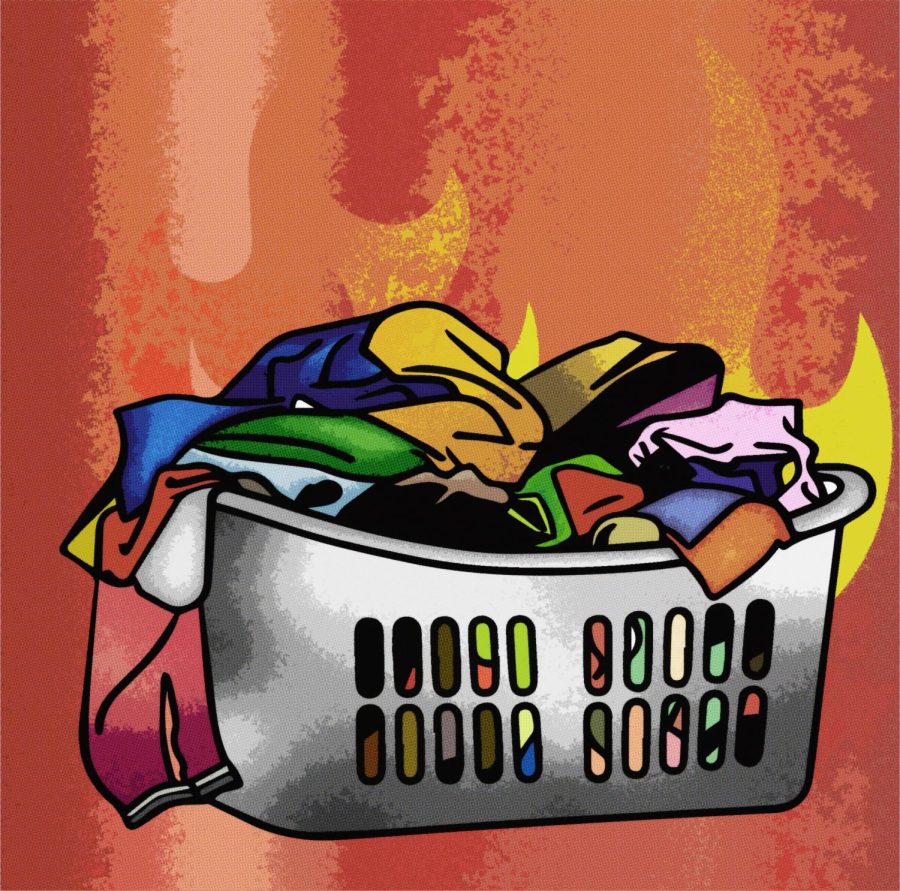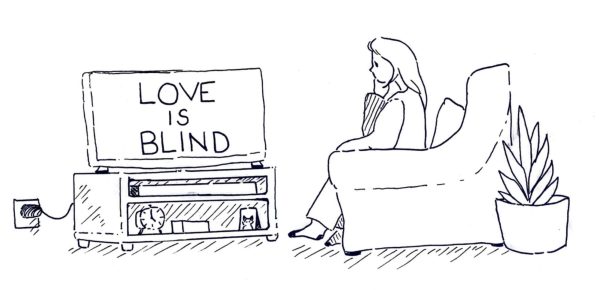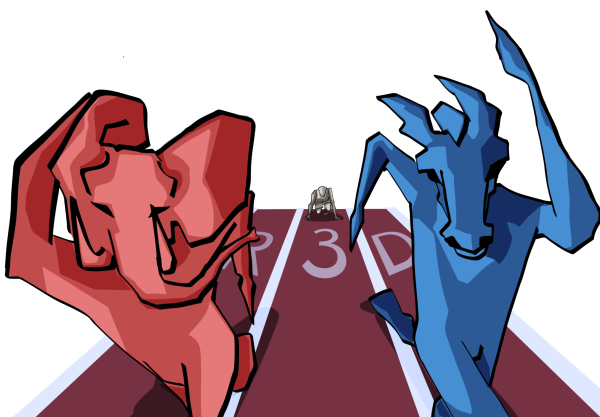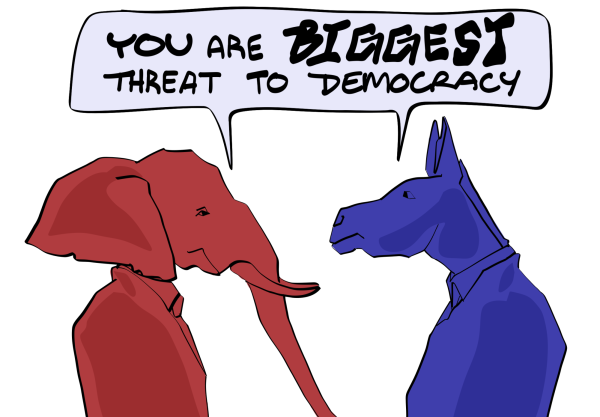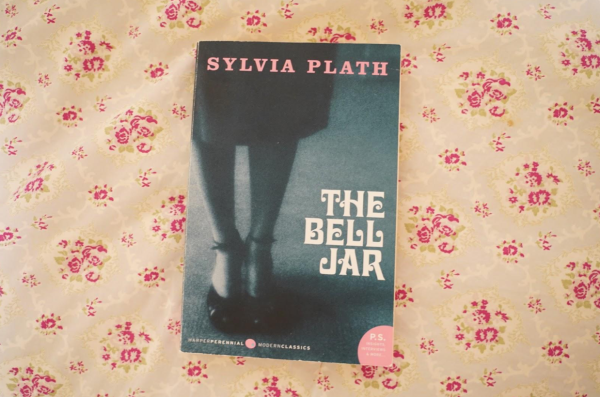Breaking the cycle: How we can slow down fast fashion
In a culture so easily influenced by screens, fashion is destined to cause more damage than you think.
We get out of bed every morning, decide which tops and pants go together and close the closet doors. We rarely think about the processes involved regarding our clothing.
Once a means of self-expression, clothing is now considered a commodity. The way you dress now conveys your social standing and financial level. The problem is that clothes connect to exclusivity and belonging. Active shoppers hate feeling like they’re being left behind.
Fashion feels more and more like conforming to aesthetics, and wanting to be associated with certain labels. This is especially true in a society driven by consumerism, capitalism and content.
This closely relates to social media and how it may quickly increase an item’s popularity, contributing to overconsumption. Since the pandemic, people have been online more than ever. With the growth of social media platforms like TikTok, users endlessly doom scroll, trying to keep up with the latest trends. The algorithm impacts our lives, making it challenging for us to stop and consider what we wear and purchase.
This phenomenon is primarily driven by our innate desire to fit in and relate to those around us. When we admire an item of clothing that someone else is wearing, we immediately consider purchasing it and the cycle continues. We’re presented with so much content that it is challenging for us to think independently.
As someone who loves fashion, I find this troubling. What’s the point in purchasing an entirely new wardrobe when I could just purchase timeless pieces that I could wear for years? Why does shopping feel so different now?
A trend forecaster is a buzzword I’ve recently heard a lot. This is merely another word for a fashion analyst. A trend forecaster predicts what will be fashionable in the future.
These trend forecasters appear throughout my algorithm, mostly in the form of TikTok and Instagram reels. I grow weary of watching their content. Trends appear to be coming and going too quickly. What is fashionable today won’t be fashionable in six months, let alone a year from now.
We have seen the creation of microtrends as a result of this hyper-cycle, which are particular trends that rapidly fall in and out of style. Even the microtrend cycle has accelerated. It used to take three to five years for a microtrend to cycle through; now, it only takes a few months or weeks.
Why is this bad? The faster trends change, the faster garment workers must work. There is no minimum or hourly wage guarantee for fast fashion employees. They often earn piece rates, earning as little as 3 cents per item. Many factories are predominately staffed by both impoverished women and children, particularly in Asian countries. These workers put in up to 16 hours a day, seven days per week in unsafe conditions.
Cancerous chemicals such as nonylphenols are used in clothing production so factory workers regularly breathe in these chemicals and are predisposed to cancer.
The pace in which these trends develop contributes to a culture of waste as well. As a consequence, the global secondhand market is saturated with unwanted clothing. Waste colonialism continues in the Global South with piles of clothing. This term describes tactics used by developed nations exporting waste to underdeveloped areas of the world.
This exploitation also leads to environmental degradation. According to an article from Insider, fashion production makes up 10% of humanity’s carbon emissions, dries up water sources and pollutes rivers and streams.
I usually buy my clothes secondhand, but every few months I find a piece of fast fashion clothing that smoothly blends into my sense of style. I feel guilty if I purchase it. Fast fashion is both a human rights and an environmental issue.
Cecilia Wolthausen, a Chico State student who runs an online pop up shop named Vintage Garden, hopes to disrupt the current cycle of fashion by retailing her clothes at a cost that is affordable to college students.
Wolthausen uses Instagram to market her clothing. Customers can purchase through direct messaging once she lists the item, size and price. She seeks to encourage sustainable consumption with her audience, which is primarily Chico State students.
“Reselling an item rather than tossing it away is one of the best ways to act sustainably,” Wolthausen said.
According to Wolthausen, the consequences of fast fashion result from too many trends. She discusses how there are too many trends and the consequences. We are all aware that there is an overconsumption issue with fashion. As uncomfortable as it may be to admit, we just purchase too many things.
“I really hope people become more educated about this subject,” Wolthausen said. “It all ties back to the consumers.”
I’ll admit that I’ve felt impulses to restart my wardrobe because I became tired of what I was wearing. I still felt that I was engaging in overconsumption.
There are little actions we can take to slow down fast fashion, but preserving the planet will undoubtedly take time.
Buying less is the easiest way for consumers to reduce their impact on the planet, because it sidesteps all of the headaches and contradictions that come with trying to shop sustainably. It’s even better when you shop secondhand.
Additionally, there are online marketplaces like Depop, Ebay, Grailed and Poshmark that make it possible to find particular items. I’ve recently started exchanging clothes with friends so that we may all have new wardrobes without wasting anything. Giving your friends your clothing is not only environmentally friendly but also sentimental. It makes me thrilled to know that people I care about own my clothes. A fresh life is given to the piece.
To stop the cycle, we can all contribute in our own ways. While implementing these changes may seem insignificant, if we act as a community, even our individual decisions can have a significant influence on the fashion industry.
Jolie Asuncion can be reached at [email protected].




